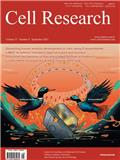
细胞研究(英文版)(Cell Research) 知网目次万方目次
- CSCD
- 科核
- 高T1
- 主管单位:
中国科学院
- 主办单位:
中国科学院分子细胞科学卓越创新中心、中国细胞生物学学会
- 国际刊号:
1001-0602;EISSN1748-7838
- 国内刊号:
31-1568
- 学科分类:
- 字数:
4000-34000
- 有无基金:
/有基金 100.0%
- 周期:
CN外文-月刊
- 特殊属性:
第一批认定学术期刊
- 电话:
021-54920953,54922841(官网电话)
- 邮箱:
cellres@sibcb.ac.cnleic@sibcb.ac.cn(官网邮箱)
- 复合因子:
3.358
- 综合因子:
2.35
- 收录:
知网目次,万方目次
- 级别:
CSCD,科核,高T1
期刊简介
《细胞研究》期刊已被查看: 次
更新频次
单位占比
一作占比
/有基金-100.0%投稿指南
1、投稿方式:在线投稿。
2、刊内网址:(202402期)
http://www.nature.com/cr
http://www.cell-research.com/
3、投稿系统:
https://mts-cr.nature.com/cgi-bin/main.plex
4、出刊日期:月刊,一年出版12期。
2024年2月29日星期四
《细胞研究(英文版)》投稿指南
Guidelines-For Author
【官网信息】
Guidelines - For Author
Editorial policy
Submission to Cell Research implies that all authors have seen and approved the full manuscript. Corresponding authors of accepted papers will be required to sign a Licence to Publish form on behalf of all authors (see below). To avoid unnecessary delays in the review process, please consider the following policies carefully before submitting your manuscript.
Duplicate publication
Material submitted to the journal must be original and not published or submitted for publication elsewhere in any language. This policy applies to material submitted elsewhere while the contribution to Cell Research is under consideration. Authors submitting a manuscript should notify the editor(s) if part of their contribution has appeared or will appear elsewhere, or if any related material is under consideration or in press elsewhere.
If a submission contains a figure that is published elsewhere or that is copyrighted, the author must provide documentation that the previous publisher or copyright holder has given permission for the figure to be re-published. The editors consider all material in good faith, and assume that the journal has full permission to publish every part of the submitted material, including illustrations.
Conflicts of interest
In the interests of transparency and to help reviewers assess any potential bias, the journal asks authors of research articles to declare any competing commercial interests in relation to the submitted work. Referees are also asked to indicate any potential conflict they might have with reviewing a particular paper.
Electronic manipulation of images
Digital image enhancement is acceptable practice, although it can result in the presentation of unrepresentative data as well as in the loss of meaningful signals. During manipulation of images a positive relationship between the original data and the resulting electronic image must be maintained. If a figure has been subjected to significant electronic manipulation, the specific nature Guidelines for Authors of the enhancements must be noted in the figure legend or in the ‘Materials and methods’ section. The editors reserve the right to request original versions of figures from the authors of a paper under consideration.
Ethical considerations
Protocols for research projects involving human subjects or animals must have been approved by a suitably constituted Ethics Committee of the institution within which the work was undertaken and must conform to the provisions of the Declaration of Helsinki (as revised in Edinburgh 2000). Any experiments involving animals must be demonstrated to be ethically acceptable and, where relevant, conform to national guidelines for animal usage in research.
Supplementary information for editors and reviewers
Any manuscripts under review or accepted for publication elsewhere should accompany the submission if they are relevant to its scientific assessment. Authors should also provide upon submission any kind of supplementary material that will aid the review process.
Format of Papers
Preparation of manuscripts
The manuscript should be double-spaced throughout using 15px Times New Roman/Arial. Number all pages, beginning from title page, and followed by abstract, introduction, results, discussion, materials and methods, acknowledgments, references, figure legends and figures/tables. Gene symbols should be italicized; protein products are not italicized. Non-standard abbreviations should be defined in brackets when first used in the text.
Title page: The title page should include: full title (a brief declarative statement of the major findings of the research), running title (no more than 60 characters including spaces), name of each author, affiliation, city with postal code and corresponding author’s contact information.
Abstract: The abstract should briefly (no more than 250 words) describe in complete sentences the scope of the investigation, the results obtained and the major conclusions. Abbreviations and reference citations should be avoided. 3-7 keywords should be given after the abstract.
Introduction: The introduction should give a brief background knowledge related to the research and should be as concise as possible.
Results: The results should clearly describe the experimental data in tables and figures.
Discussion: The discussion should focus on the interpretation and significance of the findings with concise objective comments.
Materials and Methods: The materials and methods should be described clearly and referenced in sufficient detail.
Acknowledgments: The acknowledgments should be brief and include financial supports along with the numbers of grants.
Gene nomenclature: Authors should use approved nomenclature for gene symbols, and use symbols rather than italicized full names (Ttn, not titin). Please consult the appropriate nomenclature databases for correct gene names and symbols. For proposed gene names that are not already approved, please submit the gene symbols to the appropriate nomenclature committees as soon as possible, as these must be deposited and approved before publication of an article.
References
The references should include only articles that are published or in press. The references are each numbered, ordered sequentially as they appear in the text. List all authors unless there are more than 6, in which case only the first 3 should be given, followed by “et al”.
Please use the following style for references:
Article in a Journal:
1 Zarubin T, Han JH. Activation and signaling of the p38 MAP kinase pathway. Cell Res 2005; 15:11-18. Chapter in a Book:
2 Hirsimaki P, Arstuka AU, Trump BF, Marzella L. Autophagocytosis. In: Trump BF, Arstuka AU, eds. Pathobiology of cell membranes. New York: Plenum Press, 1983:201-236.
A book:
3 Kryger M, Roth T, Dement W, eds. The Principles and Practice of Sleep Medicine. 2nd Edition. Philadelphia: WB Saunders, 1994.
Online Publication:
4 Jelinic P, Stehle JC, Shaw P. The testis-specific factor CTCFL cooperates with the protein methyltransferase PRMT7 in H19 imprinting control region methylation. PLoS Biol 2006; 4: e355.
DOI: 10.1371/journal.pbio.0040355
Figures
Figures and images should be labeled sequentially, numbered and cited in the text. Figures should be referred to specifically in the text of the paper but should not be embedded within the text. The use of three-dimensional histograms is strongly discouraged when the addition of the third dimension gives no extra information. If a table or figure has been published before, the authors must obtain written permission to reproduce the material in both print and electronic formats from the copyright owner and submit it with the manuscript. This follows for quotes, illustrations and other materials taken from previously published works not in the public domain.
# First Name Last Name Last Name
1 Mark Otto Otto
2 Jacob Thornton Thornton
3 Larry the Bird the Bird
For submission, TIFF, PSD, AI, JPEG and EPS are recommended acceptable formats for the figures, which should be submitted separately. Use quality graphic programs such as Adobe PhotoShop, Adobe Illustrator, Corel Draw, or Freehand to create your figures. Standard figure sizes are 85mm (single column) and 175mm (double column). The full depth of the page is 210mm. Provide figures at about the size they are to be printed. Please use Helvetica or Arial fonts for the creation of figures.
Figure legends
Titles and legends to figures must be submitted for all figures. They should be brief and specific, and should appear on a separate manuscript page after the Reference section. Use scale markers in the image for electron micrographs, and indicate the type of stain used.
Tables
Tables should be labeled sequentially as Table 1, Table 2, etc. Each table should be typed on a separate page, numbered and titled, and cited in the text. Reference to table footnotes should be made by means of Arabic numerals. Tables should not duplicate the content of the text. They should consist of at least two columns; columns should always have headings. Authors should ensure that the data in the tables are consistent with those cited in the relevant places in the text, totals add up correctly, and percentages have been calculated correctly. Supply tables as Word, Excel or HTML files (one table per file). Include the table title and legend in the table file.
Supplementary information
All supplementary items, including figures, movies, tables, and data (extended Materials and Methods) should have a title or legend that briefly describe the data shown. Please cite each supplementary item in the main text at least once. It is posted on the journal's web site and linked to the article when the article is published, so the file sizes must be as small as possible to make it easy to download. Supplementary information is not subedited, so authors should ensure that it is supplied ready and correct for publication online.
File formats
File formats for manuscript files, figures and tables that are acceptable for our electronic manuscript submission process are given on the online forms. Please follow our artwork guidelines for submitting figures, and use a common word-processing package (such as Microsoft Word) for the text.
Letters to the Editor
Letters to the Editor provide rapid and concise report of a novel finding that is brief in nature but is of general interest to the field.
Specific format requirements for preparing a Letter:
There is no Abstract and no subsections on Introduction, Results or Discussion. Nevertheless, the beginning paragraphs should present concise but yet sufficient background information that would allow the readers to appreciate the rationale of the work, and put the study in a proper perspective.
The entire text should be no more than 1200 words.
Only one display item is allowed.
There should be no more than 10 references.
Generally, the information of Materials and Methods is not needed, but in the case when such information is unique and important to the study, it could be submitted as a supplement.
Submission of Papers
Manuscripts should be submitted via online submission at http://www.nature.com/cr or http://www.cell-research.com. However if you have problems with the online submission, please contact Cell Research editorial office at cellres@sibcb.ac.cn
Initial submission
1. Please make sure you have gathered all the required manuscript information listed as follows before starting submission. A cover letter stating that the manuscript has not been and will not be considered for publication elsewhere and giving a brief introduction to the novel findings of this work, along with three or more experts in the field as potential reviewers.
2. A declaration stating that all the authors agreed to submit the manuscript to Cell Research with the signature of the corresponding author. Licence to Submission should be signed and faxed to the editorial office of Cell Research. Fax: +86 (0) 21 5492 0952.
3. Electronic files including the text and the figures/tables.
Revised manuscript submission
Enclose a rebuttal letter to answer the comments of the reviewers and the editors when submitting a revised manuscript.
Getting help
If you need additional help, please contact the Cell Research editorial office (cellres@sibcb.ac.cn).
Licence to publish
The corresponding author must complete and sign the Licence to Publish form upon acceptance of the manuscript and return it to the editorial office. Failure to do so will result in delays to the publication of your paper.
Open access
Upon submission of an original research paper, authors can indicate within the manuscript tracking system whether they wish to pay an article processing charge for their article to be published open access. The article processing charge is £2,980/$4,390/€3,490 (plus VAT where applicable) and can be paid via credit card or by requesting an invoice be raised. By paying the article processing charge, authors are permitted to post the final, published pdf of their article on a website, institutional repository or other free public server immediately on publication.
Proofs and Offprints
Once the manuscript has been accepted, the corresponding author(s) will receive PDF proofs and is responsible for proofreading and checking the entire article. Authors should correct only typesetting errors, no major alteration of the text will be accepted. Page proofs must be returned within 48 hours to avoid delays in publication along with the offprint order if required. Later orders submitted after the journal is printed are subject to increased reprint prices.
Page Charges
Page charges are currently 500 RMB (US$80) per print page and 1500 RMB (US$200) per color page in the journal. These charges can be paid to Cell Research by Telegraph Transfer or Check by International Courier Companies.
(1) Telegraph transfer:
Item Title: Publication fee to Cell Research
Bank Name: Bank of China, Shanghai, Jianguo Rd.(W) Sub-Branch
Account Number: 458545000888
Account Name: CAS Center for Excellence in Molecular Cell Science
Address: Room 401, Building 31B, 319 Yueyang Road, Shanghai 200031, China.
(2) Remittance through Post Office
Account Name: Cell Research
Address: Room 401, Building 31B, 319 Yueyang Road, Shanghai 200031, China.
《细胞研究》同类生物科学期刊
-
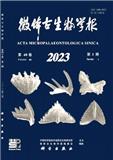
微体古生物学报
北核,CSCD,科核,高T2
CN中文-季刊影响因子0.718
-
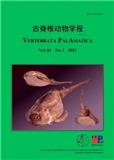
古脊椎动物学报(中英文)
北核,CSCD,科核,高T1
CN中文-季刊影响因子0.7
-

植物科学学报(原:武汉植物学研究)
北核,CSCD,科核,武A-
CN中文-双月刊影响因子1.589
-
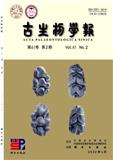
古生物学报
北核,CSCD,科核,高T1,武B+
CN中文-季刊影响因子0.83
-
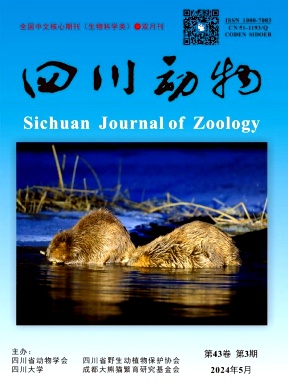
四川动物
北核,科核
CN中文-双月刊影响因子1.24
-
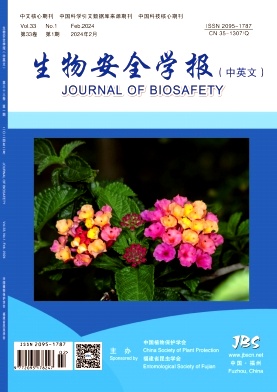
生物安全学报(中英文)(原:华东昆虫学报)
北核,科核,CSCD扩
CN中文-季刊影响因子1.247
-
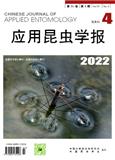
应用昆虫学报(原:昆虫知识)
北核,CSCD,科核,武A
CN中文-双月刊影响因子1.836
-
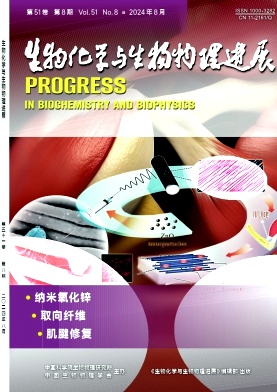
生物化学与生物物理进展
北核,CSCD,科核,武A-
CN中文-月刊影响因子1.167
常见问题
-
细胞研究杂志社官网、联系方式是什么?
细胞研究杂志社官网:http://www.cell-research.com/
投稿网址:https://mts-cr.nature.com/cgi-bin/main.plex联系电话:021-54920953,54922841(官网电话)
投稿邮箱:cellres@sibcb.ac.cnleic@sibcb.ac.cn(官网邮箱) -
细胞研究杂志是核心期刊么?
细胞研究是核心期刊,级别是:CSCD,科核,高T1, 是:生物科学分类下的知网目次,万方目次收录的期刊。
-
请问你们是细胞研究杂志社吗?
我们不是《细胞研究》杂志社。本站主要从事期刊信息展示与期刊推荐,不是任何杂志官网,直投稿件请联系杂志社。本站仅提供免费的学术指导、论文辅导、期刊投稿信息整理收集服务。
-
你们指导服务后可以保证文章被发表吗?
期刊发表的成功与否,主要取决于文章内容的质量。编辑老师会根据研究领域、创新性等多因素进行考量。我们会帮助您理解期刊的发表要求,助力提升发表几率,从而增加发表的机会。
-
晋级论文能否在报纸上发表?
在学术界,论文的发表往往被视为研究者职业发展的重要一环。晋级论文,即为了获得更高职称或学术地位而撰写的学术论文,通常需在专业期刊上发表。然而,许多人可能会问
